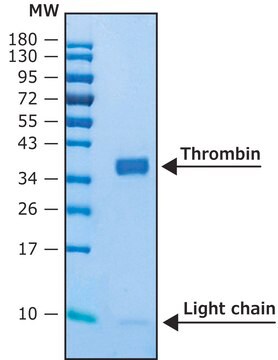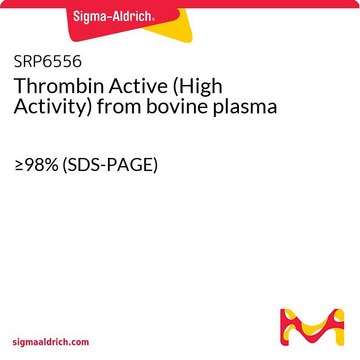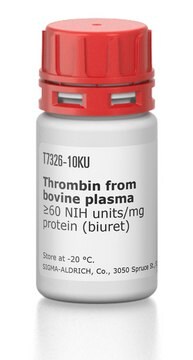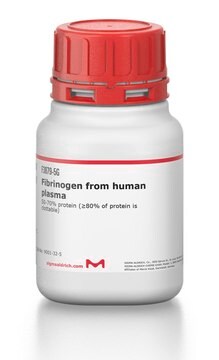SRP6557
Thrombin Active from human plasma
≥95% (SDS-PAGE), recombinant, lyophilized
Synonym(e):
Activated Factor IIa
About This Item
Empfohlene Produkte
Produktbezeichnung
Thrombin Active from human plasma, ≥95% (SDS-PAGE)
Biologische Quelle
human
Assay
≥95% (SDS-PAGE)
Form
lyophilized
Wirksamkeit
>3000 units/mg
Mol-Gew.
37 kDa
Verpackung
pkg of 1000 units
pkg of 250 units
UniProt-Hinterlegungsnummer
Versandbedingung
wet ice
Lagertemp.
−20°C
Angaben zum Gen
human ... F2(2147)
Allgemeine Beschreibung
Biochem./physiol. Wirkung
Physikalische Form
Rekonstituierung
Haftungsausschluss
Signalwort
Danger
H-Sätze
Gefahreneinstufungen
Eye Irrit. 2 - Resp. Sens. 1
Lagerklassenschlüssel
11 - Combustible Solids
WGK
WGK 3
Hier finden Sie alle aktuellen Versionen:
Analysenzertifikate (COA)
Die passende Version wird nicht angezeigt?
Wenn Sie eine bestimmte Version benötigen, können Sie anhand der Lot- oder Chargennummer nach einem spezifischen Zertifikat suchen.
Besitzen Sie dieses Produkt bereits?
In der Dokumentenbibliothek finden Sie die Dokumentation zu den Produkten, die Sie kürzlich erworben haben.
Kunden haben sich ebenfalls angesehen
Unser Team von Wissenschaftlern verfügt über Erfahrung in allen Forschungsbereichen einschließlich Life Science, Materialwissenschaften, chemischer Synthese, Chromatographie, Analytik und vielen mehr..
Setzen Sie sich mit dem technischen Dienst in Verbindung.









